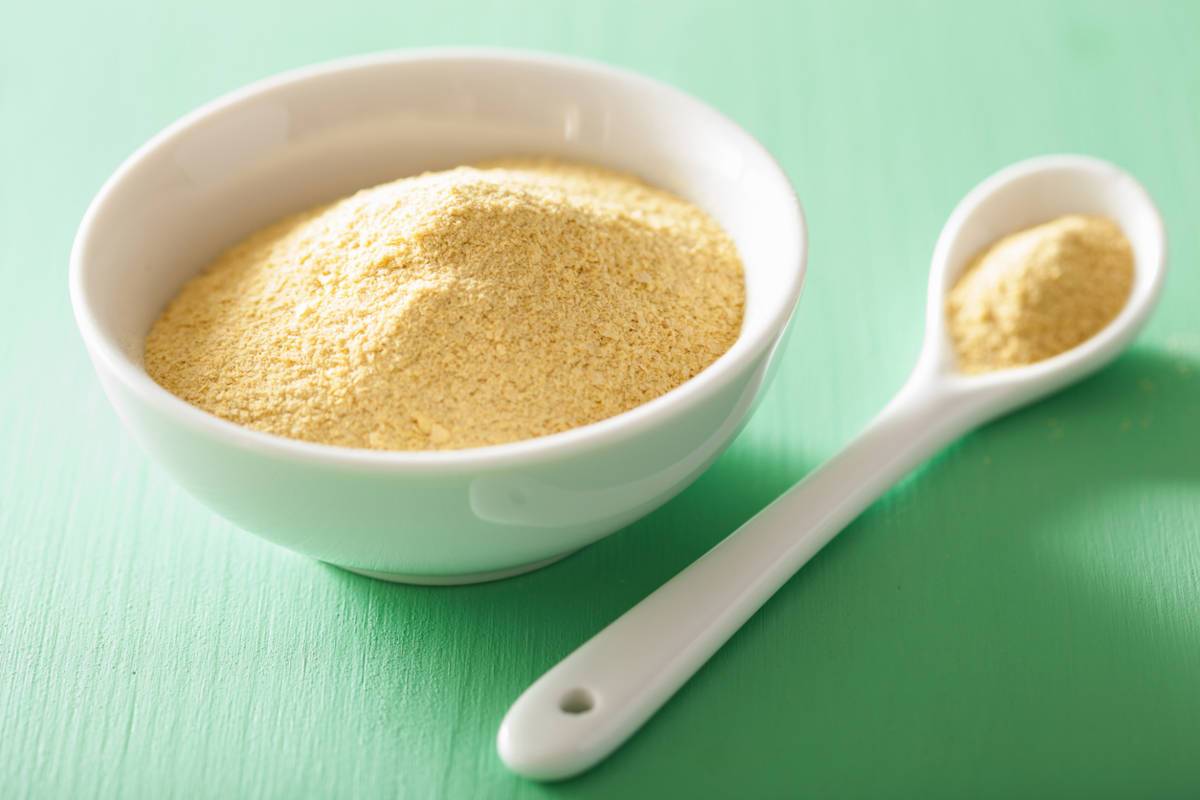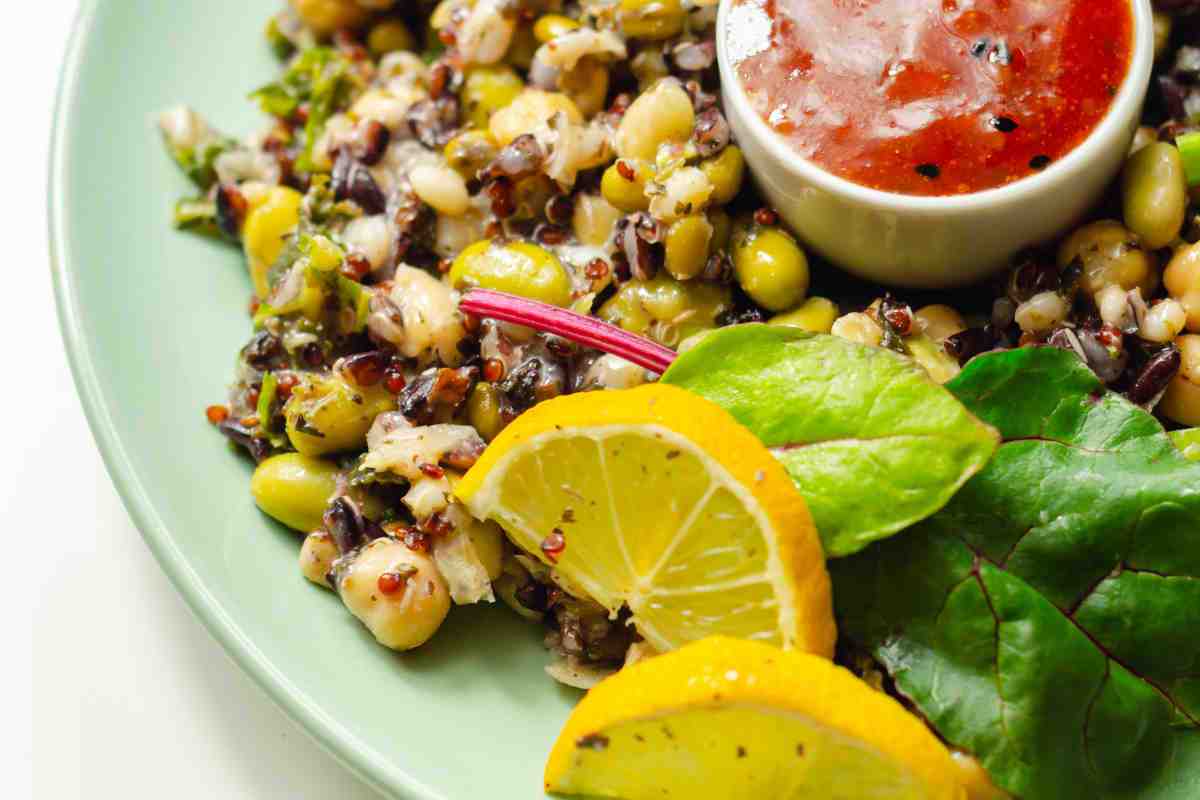Fancy trying a vegan diet but worried about finding vegan alternatives to your favourite foods? Nutritionist Rob Hobson has the answers.
The popularity of Veganuary at the start of each year shows that people are becoming more interested in following a plant-based diet, the strictest form of which is vegan. This type of diet excludes all foods of animal origin, and embarking on this journey can be a challenge for those new to it.
Making the transition as simple as possible is often a case of knowing which foods to swap for those you use every week. Understanding some of the basic vegan alternatives can also help you to adapt simple everyday meals to your new diet.
The swaps
Here are ten basic food swaps every new vegan needs to know about.
Swaps at a glance
| Swap | For |
| Minced beef | Beans and pulses |
| Mayonnaise | Avocado |
| Chicken | Vegan Quorn |
| Milk | Plant-based alternative |
| Parmesan | Nutritional yeast |
| Egg | Tofu or flax egg |
| Honey | Agave |
| Butter | Hummus |
| Pulled pork | Jackfruit |
| Yoghurt | Plant-based alternative |
OUT: minced beef
IN: beans and pulses
Minced beef is a commonly used ingredient to make many household meals such as Bolognese sauce, cottage pie and chilli. Beans are a great vegan alternative, and there are plenty to choose from.
The best beans and pulses for this type of replacement are probably black beans, red kidney beans and chickpeas, as they have a firmer texture. Beans and pulses also offer a good source of protein and other nutrients found in beef mince such as zinc and iron.
OUT: mayonnaise
IN: avocado
Mayonnaise is used in many ways, but the most common is probably as a spread, dip or salad dressing. Avocado can be blended in a food processor with a little lemon juice and salt, until it become whipped and creamy like mayonnaise.
There are health benefits to this alternative, as avocados are rich in heart health monounsaturated fats and other key nutrients such as vitamin E, magnesium, and potassium.
OUT: chicken
IN: vegan Quorn
Newbies to veganism may find excluding meat tricky; not just for taste and texture reasons, but also when trying to work out what to cook.
Vegan Quorn has a similar texture to chicken, and makes a great replacement in recipes such as stir-fries, curries, tagines and salads. Vegan Quorn is also a good source of protein, and contains other nutrients found in chicken such as zinc.
OUT: milk
IN: plant-based alternative
Milk is a key daily essential for many people, as they pour it over their breakfast cereal and use it in their tea and coffee.
There are many alternatives, all with particular advantages and drawbacks. Soya milk has more protein than the other options, while oat milk comes the closest to dairy in terms of texture and creaminess. Nut milks are another option, but they do tend to be quite watery.
Whatever your choose, try to opt for unsweetened varieties, and those fortified with nutrients including calcium and vitamins D and B12.

Nutritional yeast makes a fine Parmesan substitute to sprinkle over soups, pizza and pasta. It is fortified with vitamin B12, which is difficult to get from a vegan diet.
OUT: Parmesan
IN: nutritional yeast
It is really difficult to replicate the taste of cheese when following a vegan diet, but nutritional yeast does the job well. It has a very savoury flavour, and it can be used, like Parmesan, to sprinkle over dishes such as soups, pizza and pasta, or added to salad dressings. Nutritional yeast is also fortified with vitamin B12, which is important for vegans as it is hard to obtain from plant foods.
OUT: egg
IN: tofu or flax egg
There are two options here, because eggs are both eaten alone and used to make other dishes – especially when baking.
Tofu is a great alternative for eggs at breakfast, as it can be scrambled in the pan with spices and chopped vegetables. Like eggs, tofu is a good source of protein and contains key nutrients such as calcium, iron and magnesium.
However, tofu is not going to work when you're baking a vegan cake. Instead, you can replace chicken eggs by combining 1 tbsp ground flaxseed with 2 1/2 tbsp water to make a flax egg.
OUT: honey
IN: agave
Not everyone knows that honey is not a vegan food, but there are plenty of other sweeteners to use in its place. The closest in terms of taste is agave, which can be used in the same way.
Other sweeteners include date syrup or maple syrup; these have a more intense flavour. Sweeteners in whatever form are still sugar, so try to use sparingly.
OUT: butter
IN: hummus
If you have just turned vegan and are wondering what to put on your toast or in your sandwiches instead of butter, then why not try hummus?
This spreadable dip adds plenty of flavour to sandwiches and has the richness of butter. There are many health benefits to his food swap, as hummus contains some protein and is also rich in key nutrients including iron, calcium, magnesium, and vitamin B6.
Common vegan diet deficiencies

A well-planned vegan diet is generally healthy, but there is the chance you won't get enough of certain vitamins and minerals. Nutritionist Rob Hobson outlines the potential nutrient gaps and how to plug them.
Find out more
OUT: pulled pork
IN: jackfruit
Pulled pork has become popular over the years, and is used to create meals such as wraps and sandwiches. You can recreate the texture of pulled pork by using jackfruit torn into shreds.
If you are using fresh jackfruit, then choose a young fruit. This is because the white pith is quite flavourless, making it a blank canvas for your chosen spices and marinades. You can also use canned jackfruit.
OUT: yoghurt
IN: plant-based alternative
There are plenty of alternatives to dairy yoghurt, and which one you choose is likely a matter of taste. Soya yoghurt comes in many different flavours, and like milk is higher in protein than the other options.
Coconut milk yoghurt is delicious, but go easy, as it is quite calorific and very rich. Another option is oat yoghurt, which has a lovely taste and texture. As with vegan milk alternatives, try to choose an option that is fortified with nutrients such as calcium and vitamins B12 and D.
There are many other examples of food swaps you can use to help you switch to a vegan diet. Putting these ten simple examples into practice is a good place to start, and once you get into the flow of things you will discover other vegan swaps to suit your taste and style of cooking.







